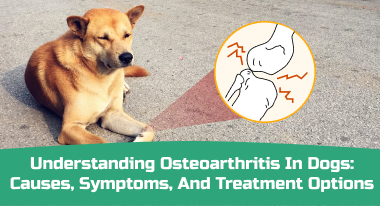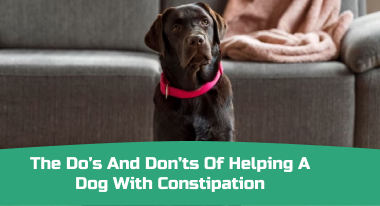Table of Contents
As a dog owner, ensuring that your furry friend always stays healthy is essential. Paying close attention to your dog’s physical symptoms is very imortant to nsure well-being. One common health issue that affects dogs is a lipoma.
This article will provide an overview of lipoma, its symptoms, causes, diagnosis and treatment options, how to prevent a recurrence, and when to consult a veterinarian.
Lipoma in Dogs: What You Need to Know
A dog’s lipoma is a benign fatty mass or tumor originating from adipose tissue. Lipomas can occur anywhere within the subcutaneous tissues but are more commonly found in the chest area or limbs. The growths typically have a slow rate of development and may increase in size over time.
Lipomas are not malignant tumors and do not spread (metastasize) to other body parts. They are often soft, round, smooth masses that move easily under your dog’s skin.

The Silent Danger: Recognizing Lipomas in Your Canine Companion
| A lipoma is a benign tumor made up of fat cells that grows slowly beneath the skin in dogs. The tours are commonly found on the chest, abdomen, legs, hand limbs and neck. Here are some common symptoms of lipomas in dogs: #1. Lump One of the first signs – small, soft lumps under the dog’s skin, – usually found in areas such as the chest, shoulders, neck, and near the ribs. – lumps may range in size and can feel soft or spongy. #2. Fibrous texture Benign fatty tumors have fibrous texture but malignant tumors may present with a firmer texture. #3. Pain Though lipomas are generally not painful, some dogs may experience mild discomfort #4. Mobility Lipomas are typically mobile and may move while palpating the lump beneath the skin. #5. Multiple lumps Some dogs may present with multiple lipomas at once. This can indicate certain skin diseases, such as canine cutaneous mast cell tumors, which can present similarly. #6. Hair loss If a lipoma is blocking the blood flow or nerve pathways, it can cause the area around it to experience hair loss. #7. Irritation The lipoma near the dog’s armpit or groin may cause irritation or discomfort when the area rubs against the dog’s fur. This can lead to hair loss or skin lesions if left unchecked. #8. Skin discoloration Lipomas can present with a darkening of the skin around the tumor, often caused by friction or a lack of circulation. #9. Difficulty breathing The lipoma blocking the dog’s airway can cause labored breathing or coughing. #10. Weight loss If the lipoma blocks a vital organ, it can lead to malnourishment and weight loss in the dog. |
A Closer Look at the Different Types of Lipoma That Affect Dogs
Here’s an table that lists different types of lipomas in dogs:
| Type of Lipoma | Description |
| Subcutaneous Lipoma | The most common type of lipoma, located just beneath the skin. |
| Infiltrative Lipoma | Invasive lipoma that can infiltrate surrounding tissue, including muscles and organs. |
| Intramuscular Lipoma | Lipoma located within the muscle tissue. |
| Peritoneal Lipoma | Lipoma located in the abdominal cavity, specifically in the peritoneum. |
| Visceral Lipoma | Lipoma located within an organ, such as the liver or kidney. |
| Intestinal Lipoma | Lipoma located within the intestinal wall. |
| Synovial Lipoma | Lipoma located within the synovial membrane, which surrounds joints. |
| Oral Cavity Lipoma | Lipoma located within the oral cavity, such as on the tongue or gums. |
| Tracheal Lipoma | Lipoma located within the trachea, or windpipe. |
| Spinal Lipoma | Lipoma located within the spinal cord. |
Causes of Lipoma in Dogs
Despite extensive research, the root cause(s) behind canine lipomas remain unknown. However, age and breed disposition increases the risk of developing these benign tumors.
Older dogs tend to develop more lipomas than younger ones due to natural changes within their bodies during aging. Specific breeds such as Labrador Retrievers and Dobermans also seem predisposed towards developing lipomas compared to others.
Other potential causes include genetics – as certain tumors run within specific breeds – endocrine system disorders like hypothyroidism and obesity.
Diagnosis and Treatment Options
Your veterinarian can diagnose whether your dog has a lipoma by performing a physical exam followed by aspiration biopsy or fine needle aspirate. These tests involve collecting cells from your pet’s mass using a thin needle inserted while ultrasound-guided.
After diagnosis confirmation, treatment depends on whether the mass poses any risks or discomfort to your pet; otherwise, benign masses may be left alone unless they grow too large or interfere with movement/comfortability for dogs.
If deemed necessary by vets after the examination (for instance, if cancerous cells are present), possible treatments include surgical removal (excision), cryosurgery (freezing) using liquid nitrogen if it’s smaller than 3cm wide – which destroys cells causing them to die off gradually – chemotherapy or radiation therapy depending on severity level & type).
Common Locations for Lipomas in Dogs
Lipomas are benign tumors made up of fatty tissue. They can develop anywhere on a dog’s body, but they are most commonly found:
Under the skin (subcutaneous)
In between the muscle and the underlying connective tissue (intramuscular)
In the abdominal cavity (visceral)
Subcutaneous lipomas are usually easy to locate, as you can feel them underneath your dog’s skin. On the other hand, intramuscular and visceral lipomas can be more challenging to detect as they are located deeper within the body.
Risks associated with Lipomas and When To See A Vet
The good news is that most lipomas are harmless and don’t cause any pain or discomfort for your pet. However, there are some risks associated with these growths that pet owners should be aware of:
Size and Location
If a lipoma grows too large, it can pressure surrounding organs or tissues, affecting their function. Additionally, if a lipoma is located in an area that can interfere with your dog’s movement or quality of life (e.g., near joints), it may need to be removed.
Malignancy
While rare, there is always a small risk that what appears to be a benign lipoma could be malignant (cancerous). If you notice any changes in the lump’s size, shape, color, or texture over time, or if your pet starts showing signs of pain or discomfort around the affected area, it’s essential to bring them to the vet for evaluation.
Cystic Lipomas
Cystic Lipomas occur when fluid accumulates inside a normal Lipoma, causing it to expand rapidly. If this happens to your dog, please seek veterinary care right away.
Preventing Recurrence of Lipoma in Dogs
While there are no guaranteed methods for preventing recurrence once your dog has developed these tumors, some steps could help reduce the chances:
– Regular exercise & weight management: Helps maintain healthy weight levels, reducing chances.
– Feeding balanced diets only: Avoid high-calorie foods likely causing obesity.
– Monitoring bumps & lumps regularly: Enables early detection before developments become severe.
When To Consult A Vet For Lipoma
It would be best to always first monitor any bumps/lumps appearing on pets’ skins before consulting veterinarians, on suitable action plans based on sizes/types detected through regular checkups since early detections lead to more accessible treatments before developments worsen.
But if you notice sudden changes like rapid growth accompanied by unusual signs like bleeding/drainage from a lump area & discomforts like pain when pressing down around them, seek veterinary intervention immediately (especially when the animal shows signs indicating trouble breathing).
To Summarize
There you have it; an overview of everything you need to know about canine lipomas. If you suspect your pet has any other medical issues beyond this condition discussed here today, always consult trained professionals’ advice before taking any actions independently since prompt interventions could mean better outcomes for both pet and pet owners.
Disclaimer: The content on the site is for educational purposes only, and it does not provide medical advice. The shared information must not be treated as a substitute for or alternative for medical practitioner advice, diagnosis, or treatment. Regarding any concerns about your pet’s health, seeking veterinary guidance is of utmost necessity. Each pet has specific health, fitness & nutrition needs. Do not disregard, avoid or delay pet health-related advice from veterinarians based on reading the information provided on this site.
FAQ’s
1. Are all lipomas in dogs cancerous and require surgery to remove them?
Answer: No, not all dog lipomas are cancerous and require surgery to remove them. Lipomas are benign masses made up of fat cells that are usually unharmful.
2. What are some non-surgical treatments for lipomas in dogs?
Answer: Some non-surgical treatments for lipomas in dogs include weight management, dietary changes, and exercise programs.
3. Can a dog live a normal life with a lipoma, or will it impact its quality of life?
Answer: In most cases, a dog can live a normal life with a lipoma as long as it is not affecting the dog’s mobility, causing pain, or interfering with normal bodily functions.
4. What should I do if I notice a lump on my dog’s body that I suspect could be a lipoma?
Answer: If you notice a lump on your dog’s body that you suspect could be a lipoma, scheduling an appointment with your veterinarian for an examination is essential.



